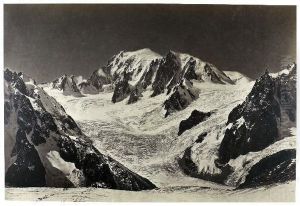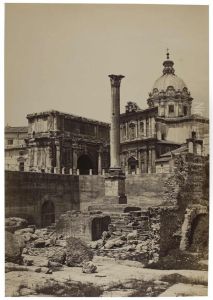Jeune Auguste Rosalie Bisson Paintings
Jeune Auguste Rosalie Bisson, commonly known as Auguste-Rosalie Bisson, was a pioneering French photographer, born in 1826 in Paris, France. He was at the forefront of photography’s early development and is particularly renowned for his remarkable achievements in mountain photography. Bisson's career in photography began in the 1840s, a period when the medium was still in its infancy and rapidly evolving. He, along with his brother Louis-Auguste Bisson, worked under the name 'Bisson Frères' and together, they embarked on ambitious projects that pushed the boundaries of the art and technique of photography.
Auguste-Rosalie Bisson’s contributions to photography are numerous, but he is perhaps best known for his daring ascent of Mont Blanc in 1861. This expedition was groundbreaking; not only was it a significant physical and logistical challenge, but Bisson also managed to take photographs at such a high altitude, a feat unprecedented at the time. The images he captured on Mont Blanc were among the first to document the high alpine environment and they offered the public a glimpse of landscapes previously unseen by the general populace. His work in the Alps is considered a milestone in the field of landscape photography and has contributed significantly to the visual documentation of mountainous regions.
Throughout his career, Bisson was also involved in architectural and portrait photography. He and his brother were commissioned to photograph the restoration of many French cathedrals, and they produced a series of photographs of the Louvre’s art collections. Their work is notable for its technical quality and artistic sensibility, combining to capture the essence of their subjects with clarity and depth. In the realm of portrait photography, Bisson photographed many notable figures of his time, including Emperor Napoleon III and Pope Pius IX.
Despite his success, Auguste-Rosalie Bisson’s contributions were somewhat overshadowed by the rapid advancements in photography that followed his active years. However, his work remains an important part of the history of photography, particularly in the fields of mountain and architectural photography. Bisson's ability to overcome the technical challenges of his time and his pioneering spirit in exploring new territories both physically and artistically mark him as a significant figure in the early development of photography. He died in 1900, leaving behind a legacy of innovation and exploration that continues to inspire photographers and adventurers alike.

